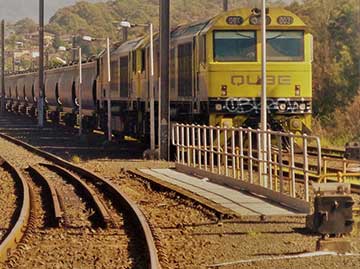The ATSB is reminding freight operators of the need to ensure train drivers receive regular training and competency assessments on how to operate on steep continuous gradient rail routes.

On 22 April 2017, a Qube Logistics grain train was travelling from Bogan Gate to Port Kembla, NSW. During its descent down Illawarra Mountain—one of the steepest descents in the NSW rail network— the driver realised control was lost and advised network control that the train was running away..
The ARTC network controller with the Sydney Train’s controller ensured the train had the ‘full road’ with no rail traffic in its path. Reaching a maximum speed of 107km/h as it rounded a curve approaching Unanderra Station, the train came to a stop once it reached the rising gradient at the Unanderra North Junction.
The ATSB found the methods used to control the train during the descent were not in line with the train handling procedures.
Ten brake applications were made as the train descended the mountain between Dombarton and Unanderra. However, the use of multiple brake applications to try and control the train meant the pneumatic braking system was unable to fully recharge between applications reducing its braking capability. Control over the train was further reduced when its dynamic braking system was rendered inoperative.
The ATSB also found actual mass of the train was 10 per cent heavier than recorded. It is likely that the additional weight placed an extra load on the braking system and affected the handling characteristics of the train.
The incident highlights the need for freight operators to ensure regular training and competency checks of train crews who operate on steep descents. Contingency plans and procedures for the management of runways in this area should be continually reviewed and tested by rail infrastructure managers.
Read the report: Runaway of grain train 8960, Dombarton to Unanderra, New South Wales, on 22 April 2017


